Scottish Championship side Falkirk FC have followed up their undefeated League One winning season with a promising start to this campaign.
They are vying for automatic promotion to the Scottish Premiership.
The Bairns have lost just three times this term.
With Saturday’s 1-0 home win against Hamilton Academical FC, they are five points clear of Livingston FC, their nearest title challengers.
Not only did they win League One without losing a game, but they have also gone an entire calendar year without experiencing defeat at The Falkirk Stadium.
They have achieved this whilst winning many plaudits for the style of play that has brought them such success.
The league is also not the only competition in which they have been impressing.
They also had a stellar run in the Scottish League Cup, defeating two Scottish Premiership teams before being knocked out by eventual winners Celtic in the quarter-final.
Despite losing the match, Falkirk took a half-time lead at Celtic Park and impressively took the game to the Champions League side.
Manager John McGlynn clearly inherited traits from his time on the Celtic staff when Brendan Rodgers was in his first spell at the club, both in terms of his style of play and his ability to complete an invincible season.
This tactical analysis will analyse John McGlynn’s tactics in the build-up phase and how his side finishes attacks with clever movement in the wide areas.
Falkirk FC Statistical Analysis
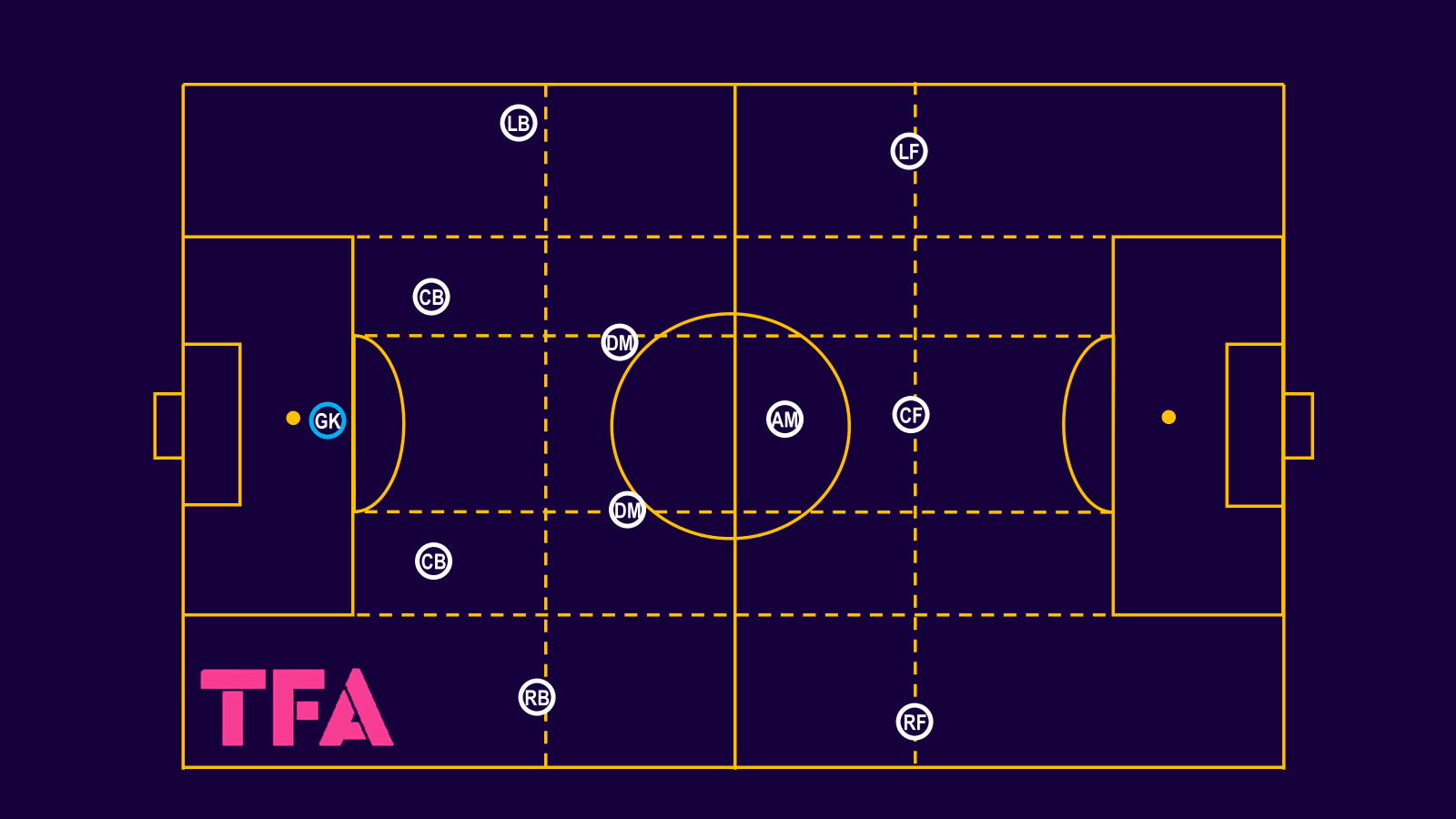
As well as leading the points table, Falkirk would be well on their way to the Scottish Premiership if promotion was awarded for a statistical champion.
The Stirlingshire-based club leads the way in shots on goal, crosses, touches in the opposition's penalty area, fouls suffered, possession, and corners.
Falkirk are comfortably the league’s highest goal scorers with 34, five more goals than second top scorers Ayr United FC and a whopping 10 more than nearest promotion chasing rivals Livingston.
This means they have entertained their fans with 1.78 goals per 90 minutes, 0.67 above the league average of 1.1.
Their xG for the league campaign of 36.37 suggests McGlynn’s side are good value for their goals tally.
For comparison, the next highest xG is Ayr United with 24.8, they currently sit on 29 goals.
The slight underperformance of xG indicates their performance in front of goal reflects the good chances they are creating.
This bodes well for the second half of the season, as welcoming in the new year at the top of the league is no fluke.
Falkirk also perform exceptionally on the other side of the ball, conceding the fewest goals (14) and having the lowest xGA (13.16) in the division.
This domination in front of both goals is evident in Falkirk's dominant average possession of 58%, reflecting their possession-based play style.
Their build-up style of keeping the ball on the ground is highlighted by them competing for just 21 aerial duals this season, almost half of what the next nearest team has competed for.
They also possess the league-high passing rate of 13.7.
Falkirk Short Goal Kick Set-Up
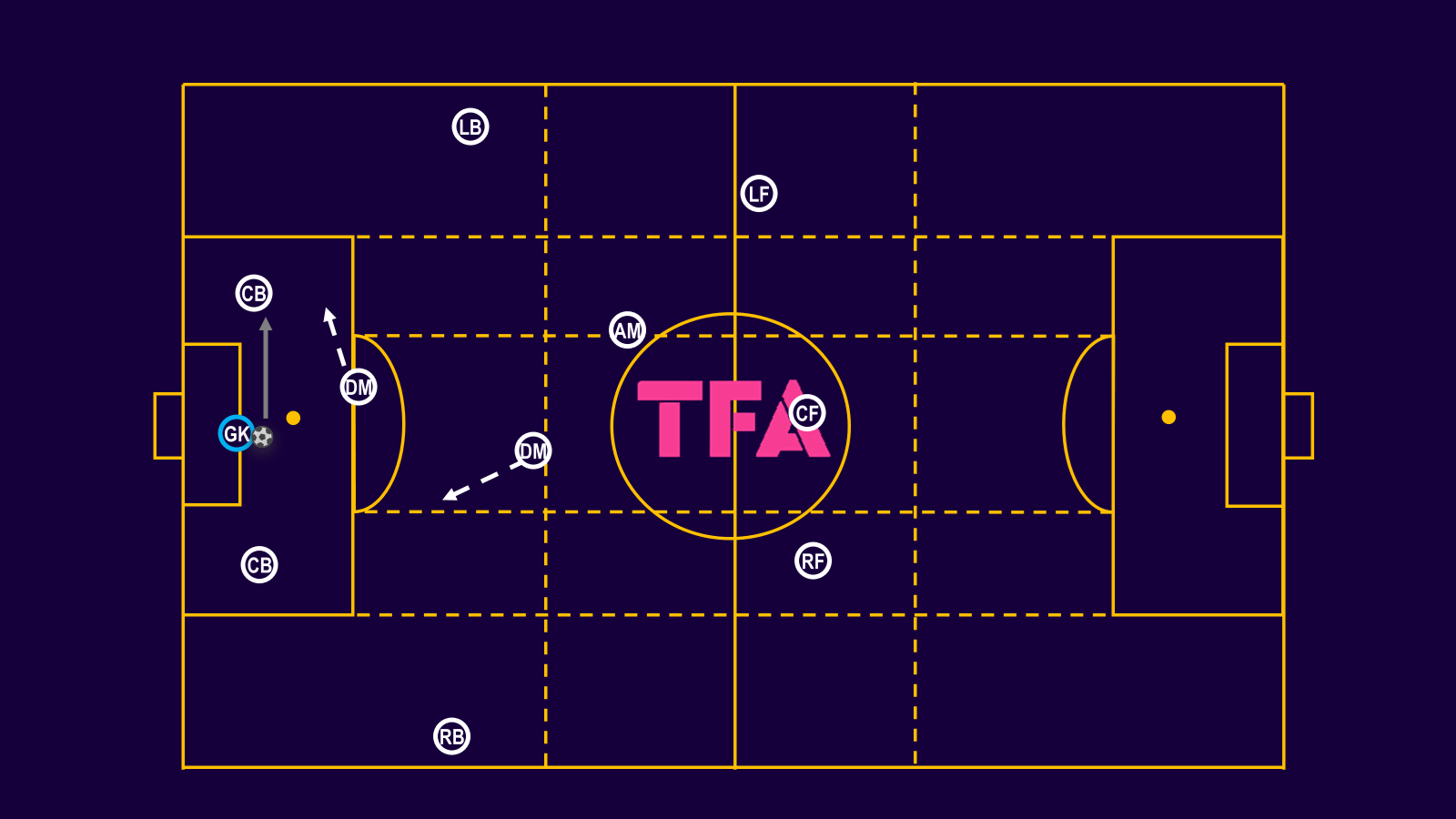
As the above tactical diagram shows, Falkirk are set up for short goal kicks.
Goalkeeper Nicky Hogarth places the ball centrally, and his centre-backs split either side of him.
The full-backs go high, usually around 30 yards out, with one defensive midfielder, #8 Brad Spencer, who played in the youth system for MLS side Houston Dynamo, dropping inside the box.
The other defensive midfielder is positioned between the halfway line and the 18-yard box, just inside the opposite half of the pitch that the first pass will be played to.
The attacking midfielder forms a zig-zag with the other midfielders, and the wingers become slightly inverted beside their central forward.
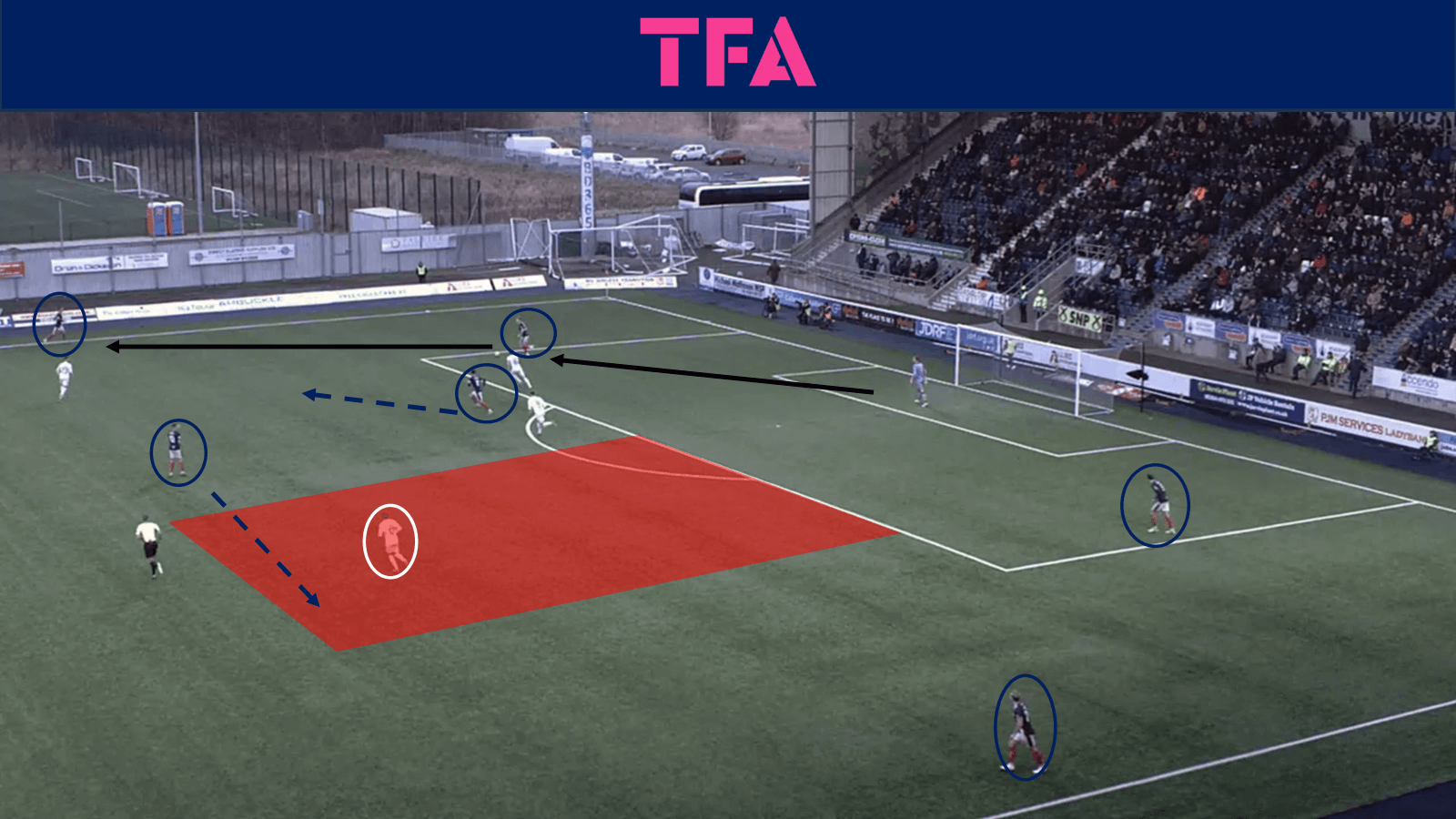
The above image shows the seconds after the goalkeeper has passed the ball to his right centre-back.
The lowest defensive midfielder, Spencer, moves to that side of the pitch with the ball.
The aim here is to attract the opposition to one side before switching the ball and attacking down the other.
When the centre-back passes to his right-back, he drops off to receive a first-time bounce pass.
The ball is then swung via the goalkeeper to the left centre-back and eventually to the left-back.
With the opposition typically attempting to trap them down one side, this usually leaves space on the other side (highlighted red) for the ball-far midfielder to drop into as the ball is switched.
On this occasion, the opposition's wide midfielder has tucked in to occupy this space.
Falkirk’s midfielder reacts by moving behind him as the ball is swung from left to right.
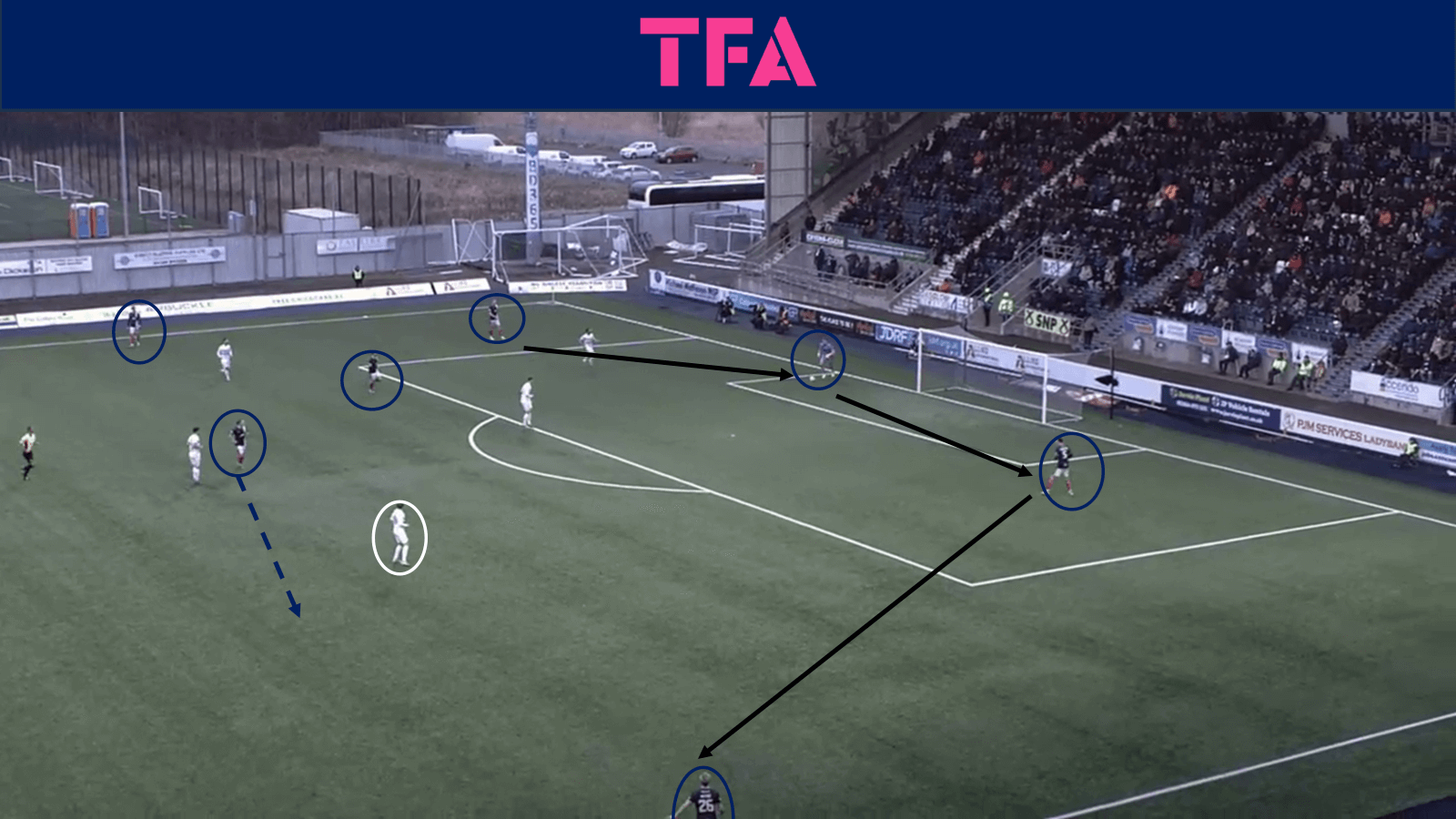
As can be seen, by attracting the opposition to one side before quickly switching the play allows the centre-back to play into his full-back unobstructed.
The full-back on this side can then open his body to receive with his back foot and play forward.
When playing against this type of press, this is a typical first phase of Falkirk’s build-up.
Falkirk Goal kicks With Pressure From The Outside
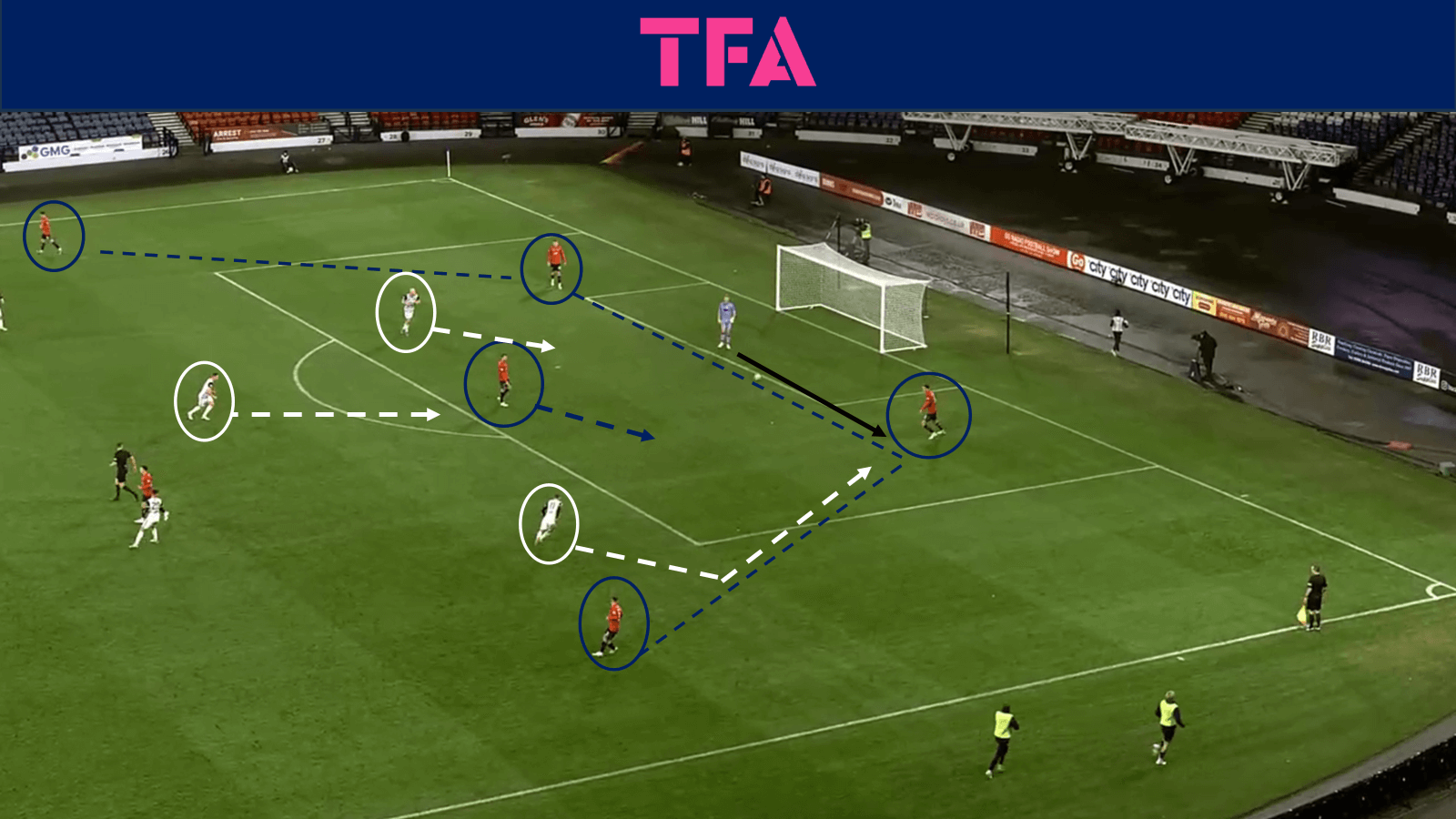
The above image from their encounter with Queen's Park FC at Hampden shows Falkirk in their usual set-up with one defensive midfielder just inside the box.
The key difference on this occasion is that the opposition are pressing them from the outside rather than attempting to trap them down one side.
This pressing action is designed to force and trap Falkirk centrally.
The Queens Park forward's looping run prevents left centre-back Liam Henderson from opening up onto his preferred left foot, forcing his first touch back inside.
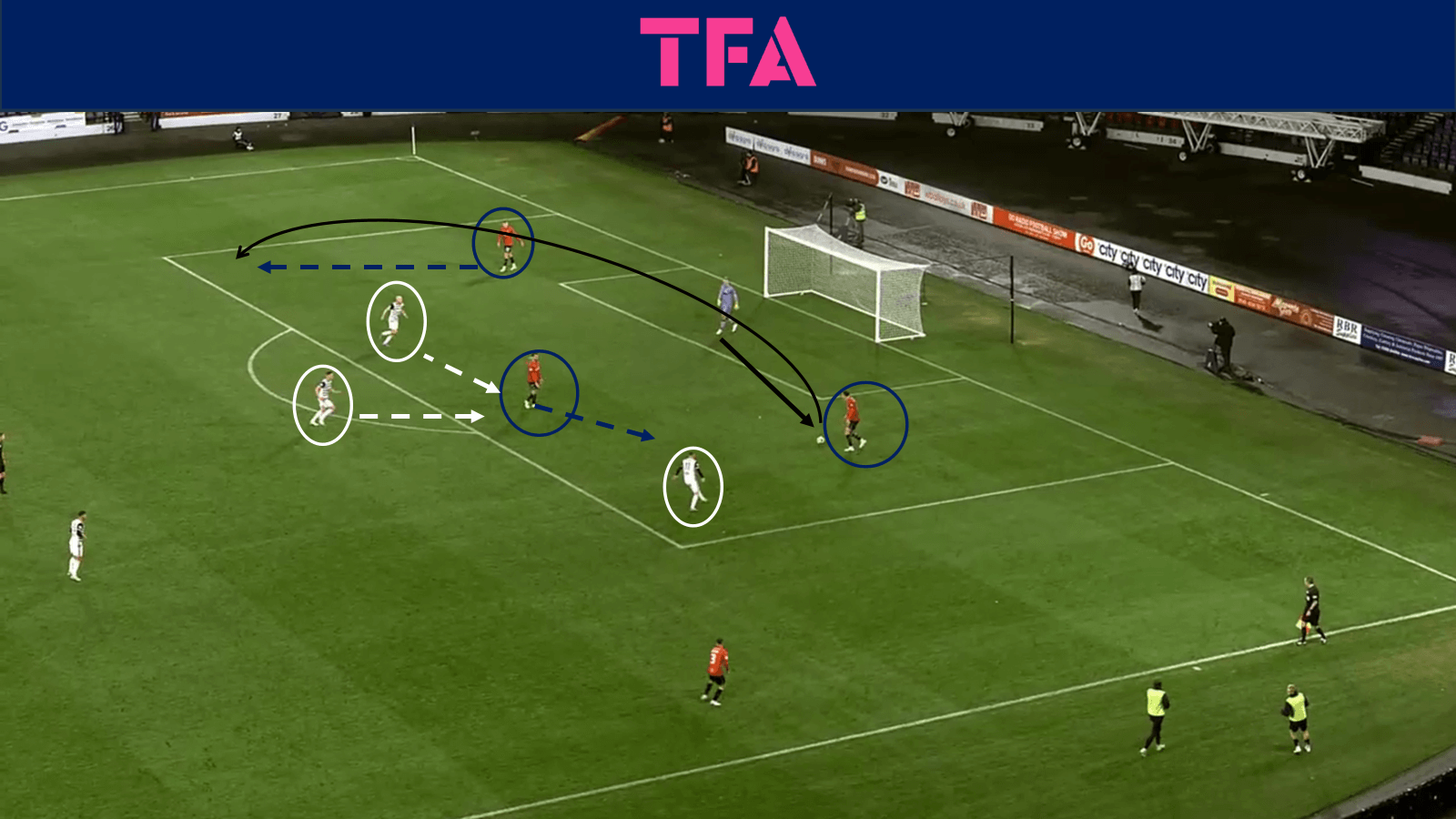
By moving closer to the ball and signalling to receive it, the defensive midfielder attracts the other two highly positioned Queen's Park players to him.
This creates space behind the ball-far forward for Henderson to clip the ball into, for his right centre-back to run onto.
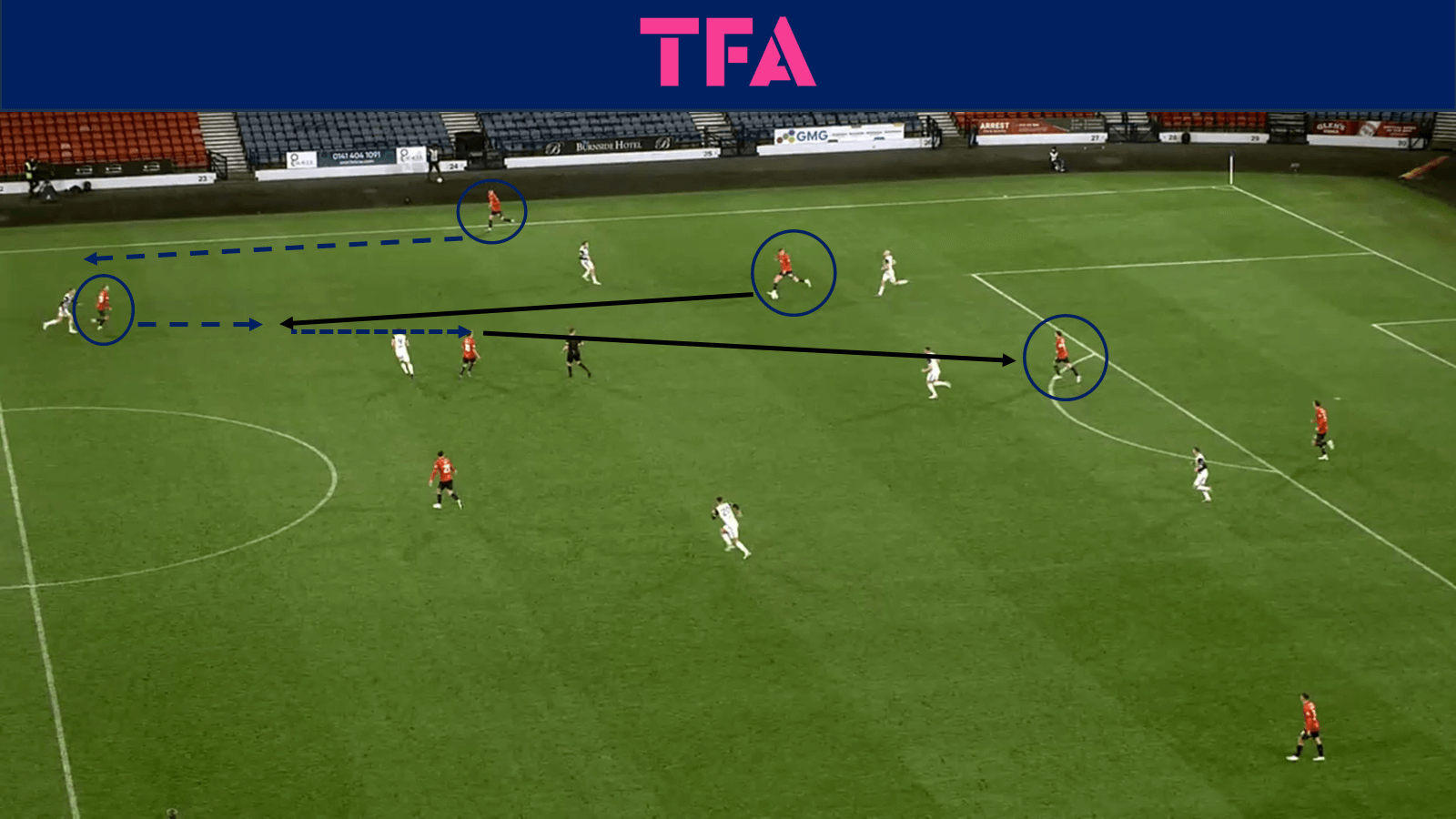
Once Falkirk had successfully escaped their box, with the centre-back driving into the space ahead of him, the slightly inverted winger moved towards the ball.
As this is happening, the lowest defensive midfielder, Spencer, remains between the centre-backs, creating a back three.
This gives an extra element of security as Falkirk attempt to progress the ball and an additional passing option for the player receiving whilst moving towards the ball.
Here, the winger, with his back to goal, dribbles towards his back line before playing a one-two with Spencer, who was in the central centre-back position.
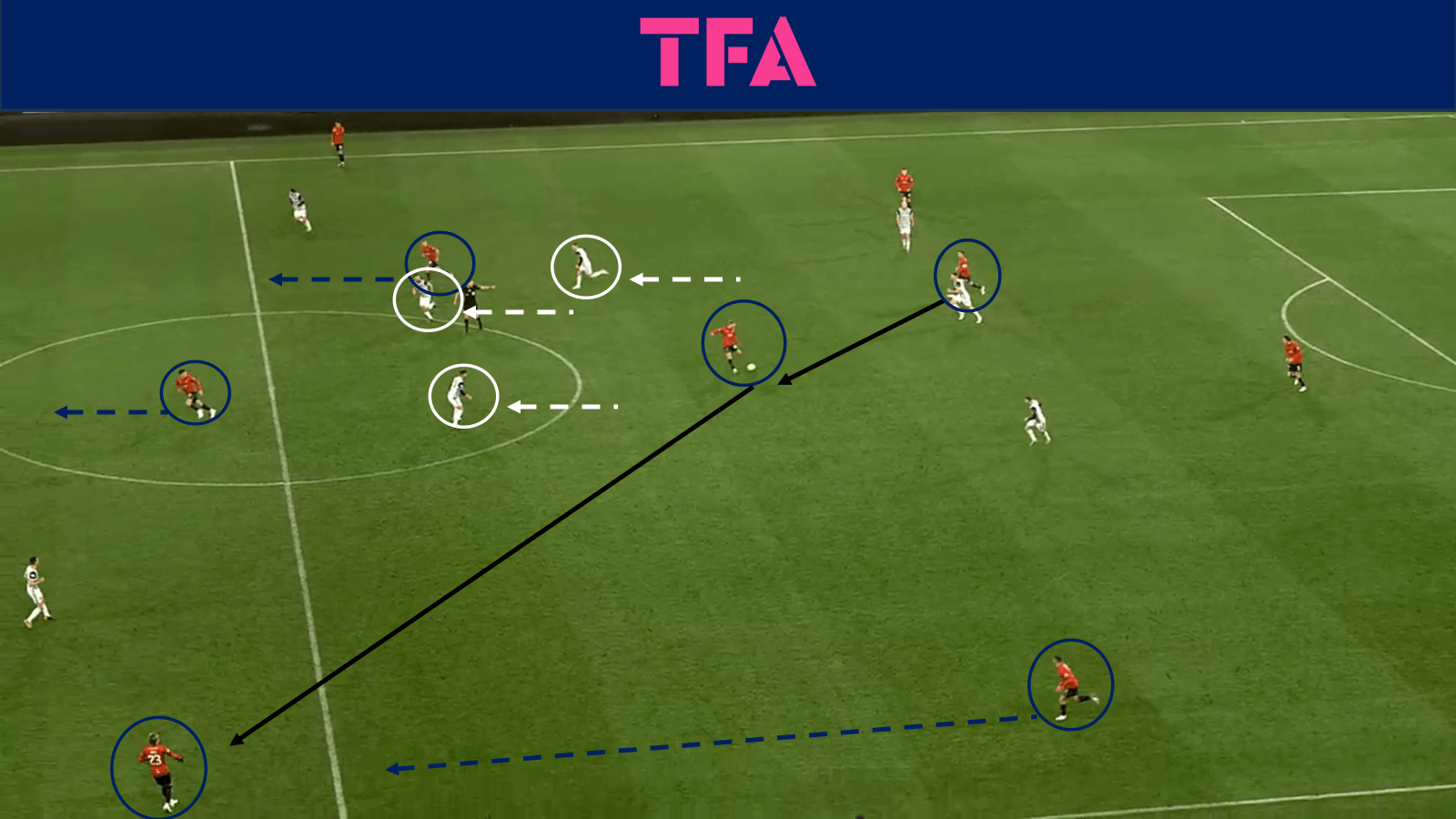
The right winger, who originally received the ball from the centre-back, now finds himself as a six.
The two central midfielders' forward runs created space for him as the winger played the one-two.
The opposition's central midfield tracked these runs.
The winger then switched the ball to his left-winger, which triggered an overlapping run from the left-back.
With the opposition aiming to force Falkirk inside, they overloaded the central area.
Falkirk is breaking their press with calm play, intelligent rotations, and selfless runs, creating a two-on-one in the wide left area.
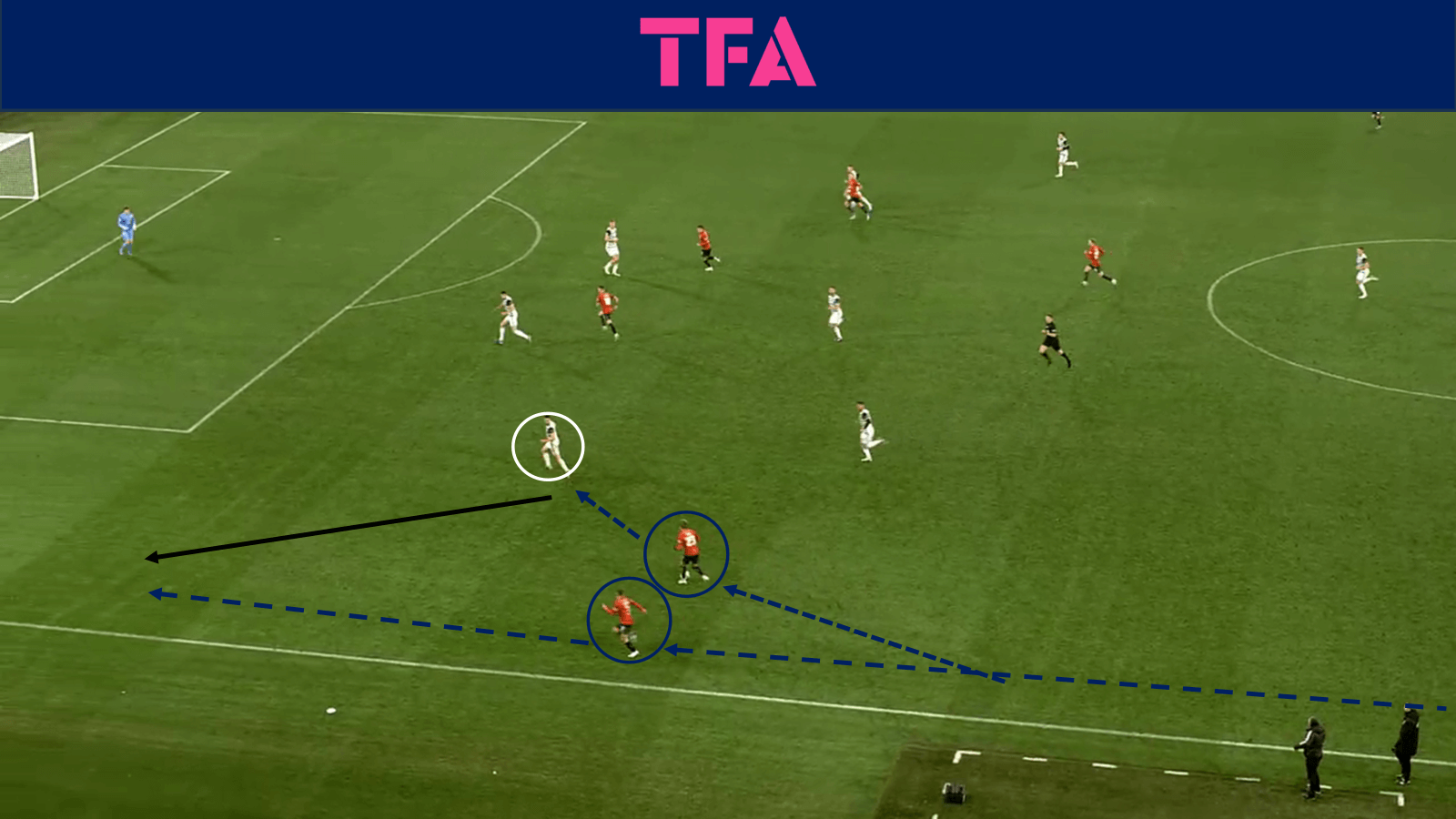
The winger drives inside with the ball, pinning the full-back.
The winger then releases his overlapping left-back, who provides a cross for the four players attacking the box.
Falkirk Long Goal Kicks
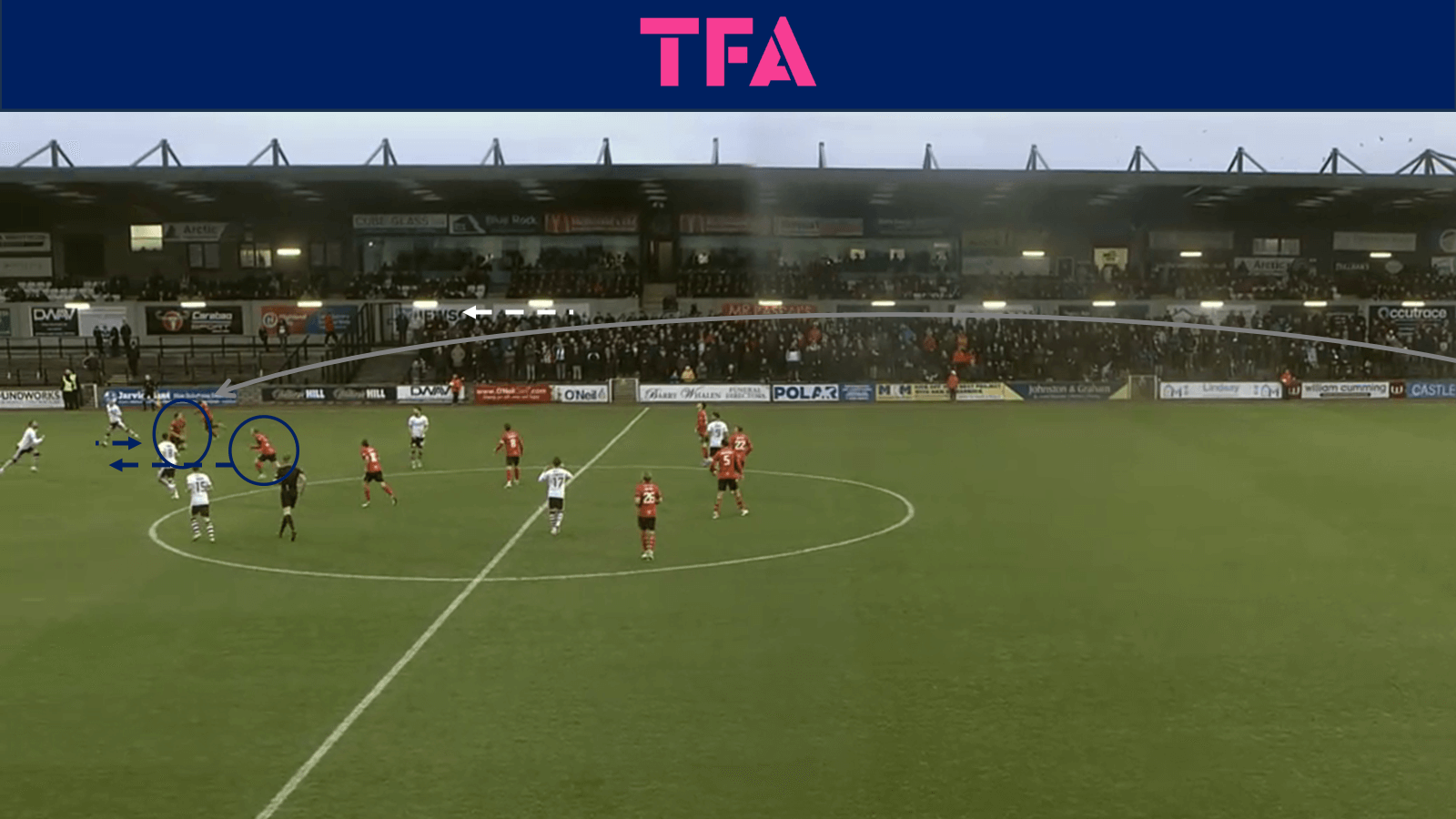
As described previously, Falkirk’s default goal kick set-up allows Hogarth to play short.
With the former Rangers and Nottingham Forest keeper being able to kick deep into the opposition’s half, Falkirk have used this weapon to their advantage.
Several times this season, including in Saturday's match against Hamilton, this long punt from the ground has been difficult for the opposition's back line to defend and has resulted in easily won corners.
During their recent defeat to Ayr United, all 10 of Hogarth’s goal kicks were hit long, and Falkirk's opening goal resulted from this situation.
The image above shows how Falkirk's back four and defensive midfielders ring-fence the long kick that led to their goal.
Striker Ross MacIver, who also finished off the move, moves towards the ball with his attacking midfielder and wingers running beyond him.
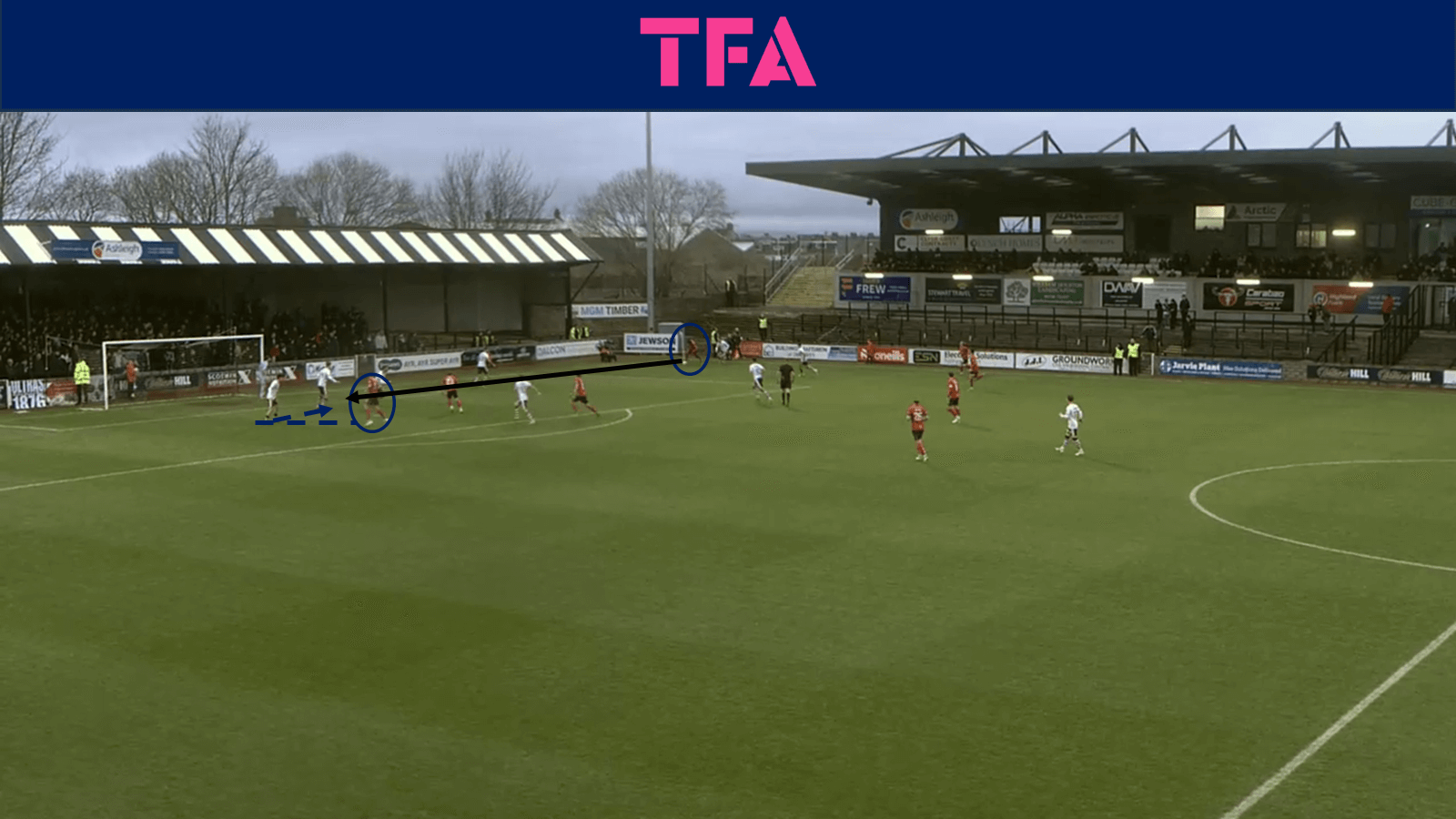
The 6ft1 striker flicked the ball on the attacking midfielder.
The midfielder played the ball wide for winger Alfie Agyeman to run onto.
As soon as the ball was played wide, MacIver made a run away from the ball towards the back post.
Just as the ball was about to be delivered, MacIver sharply cut inside his marker to get on the end of the low ball and guide it into the bottom far corner.
Falkirk Clipped Ball
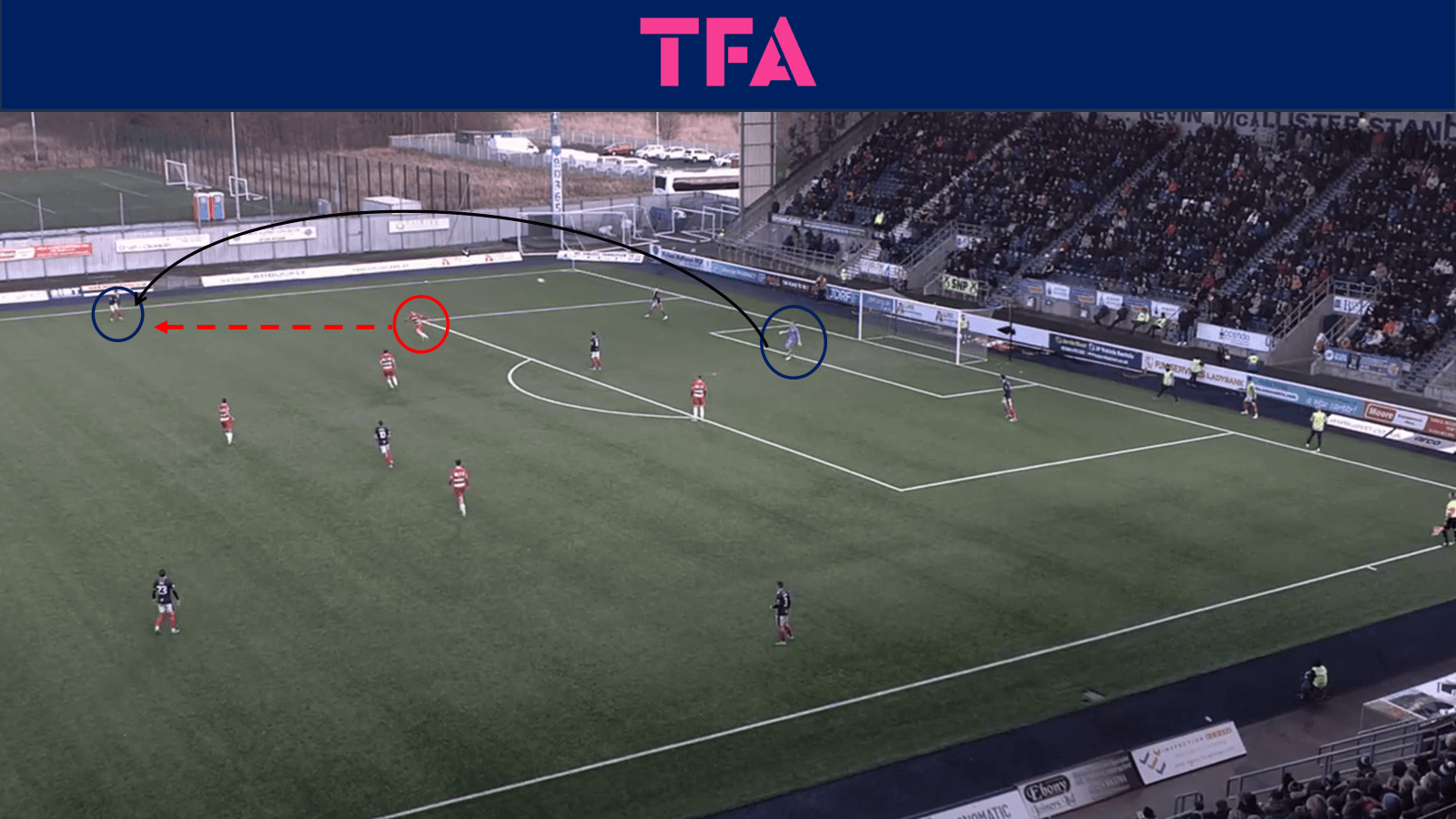
Another useful skill Hogarth possesses is the ability to clip the ball accurately into his full-backs.
This allows the first line of pressure to be bypassed with one pass and is particularly useful when the opposition are overloading centrally to prevent defensive midfielder Spencer getting on the ball.
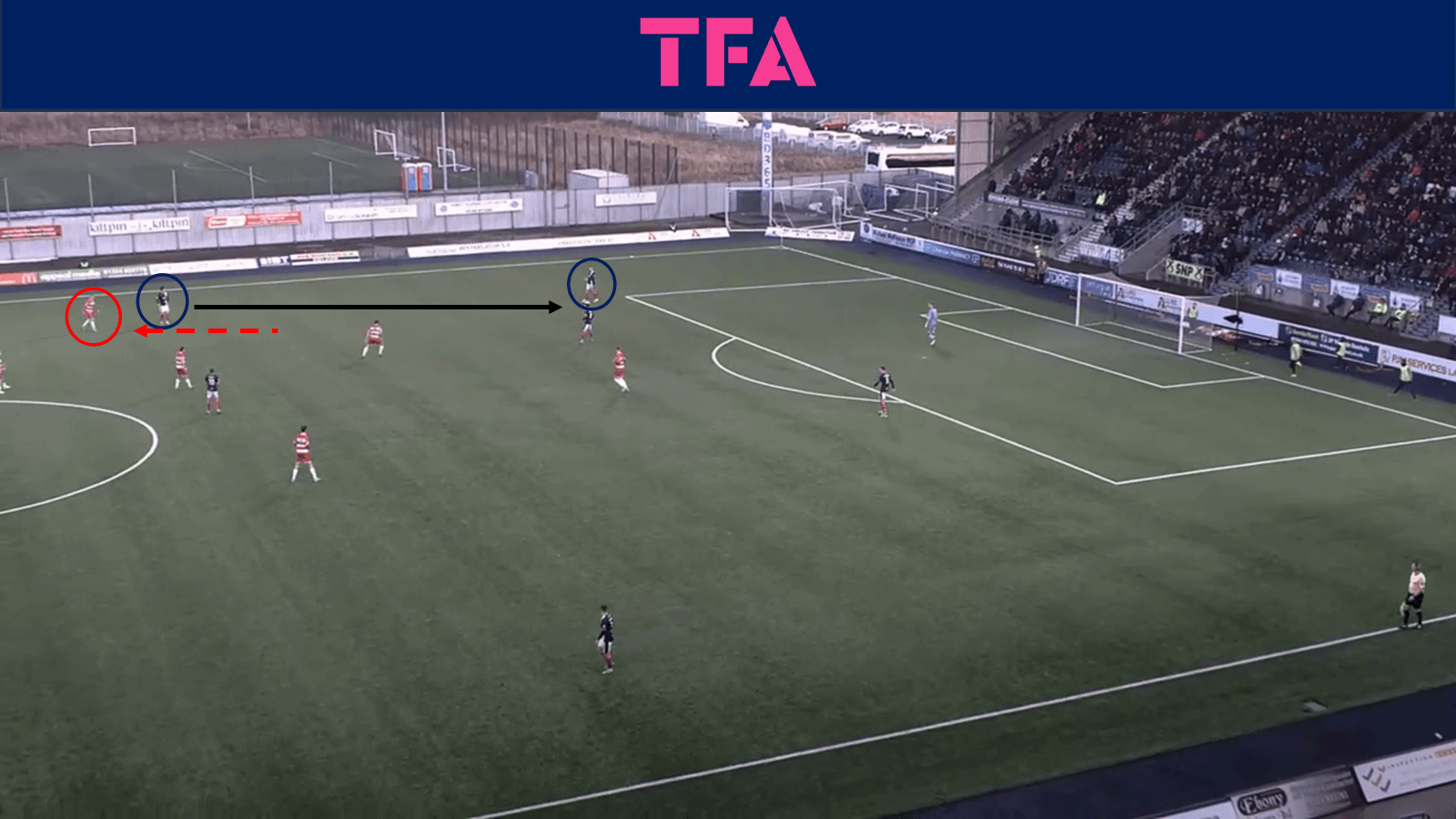
This clipped pass leads to another common occurrence for Falkirk: the pass beyond the first line of pressure forces the opposition's forward players to track back.
Falkirk then play the ball backwards to one of their centre-backs (or defensive midfielder in the centre-back position), with that player now in comfortable possession of the ball.
Not only does this get Falkirk’s defenders further up the pitch, it allows the centre-back to get his head up and pick whatever pass he wants.
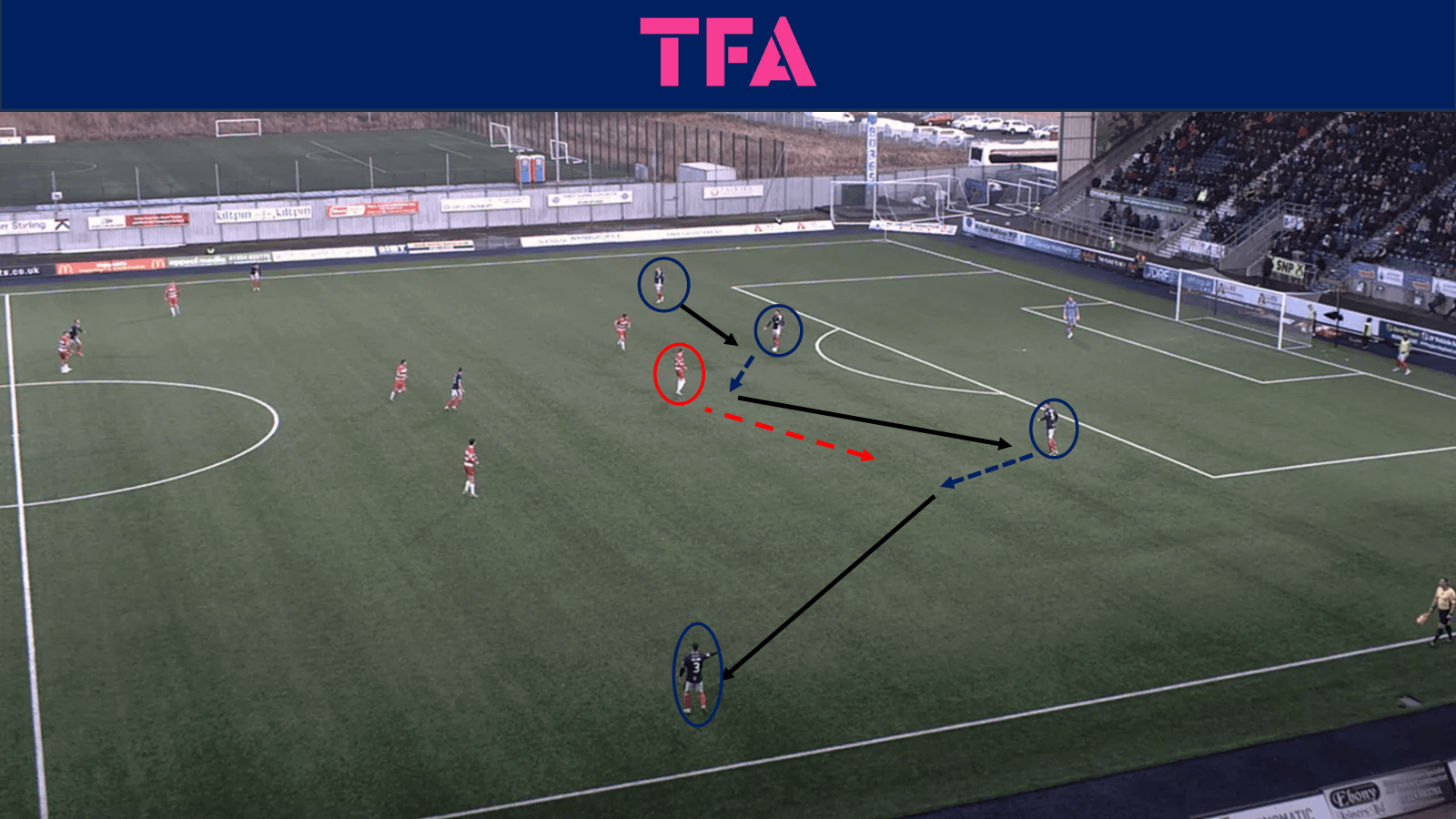
In this example, the centre-back passes to Spencer, who has again dropped centrally to create a back three.
Spencer then dribbles towards the opposition forward (shown above) before passing to his left centre-back.
Spencer pins him by dribbling towards the forward, giving his left centre-back more time on the ball.
The centre-back takes an aggressive first touch forward and plays to his left-back.
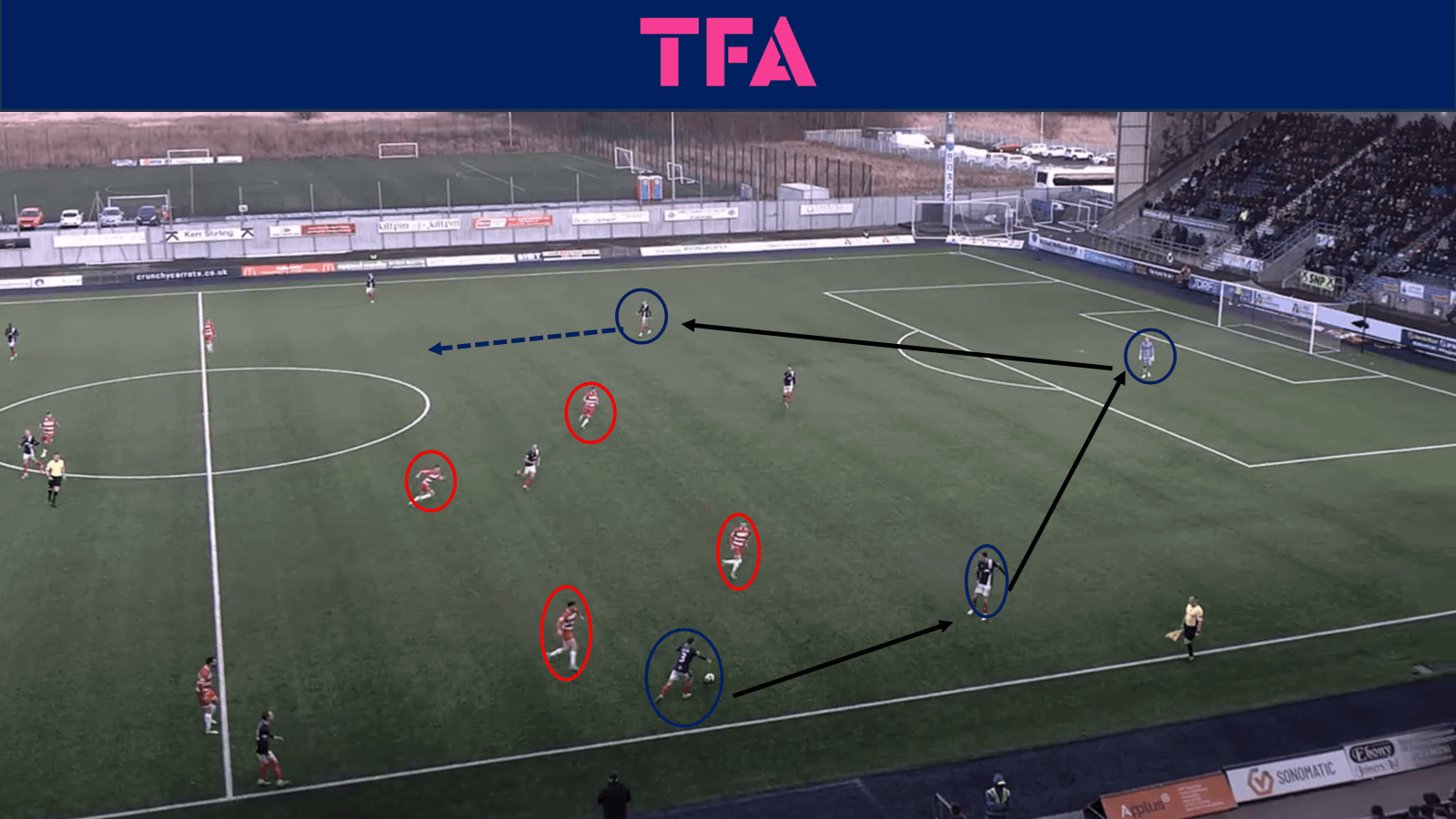
Having seen the pressure coming and having attracted the opposition to one side of the pitch, the left-back receives with his back to the goal so he can immediately bounce the ball to his centre-back.
The ball is then switched, via the goalkeeper, to the opposite centre-back.
The centre-back then aggressively attacks the space ahead of him, taking him beyond the four pressing players.
Conclusion
Falkirk’s impressive first half of the season is a testament to their manager McGlynn's tactical prowess and his commitment to his build-up play principles.
McGlynn’s side are not only a joy to watch, but they are also effective in every phase of the game.
As analysed here, their build-up play has an answer to whatever type of press the opposition throws at them.
They have also developed a method of progressing the ball through the thirds with composure and efficiency, avoiding the risks and anxious moments that plague so many teams today.
While they have a long way to go, they are well-placed to fight for back-to-back promotions, and if they manage it, their style will make them a real asset to the Scottish Premiership.

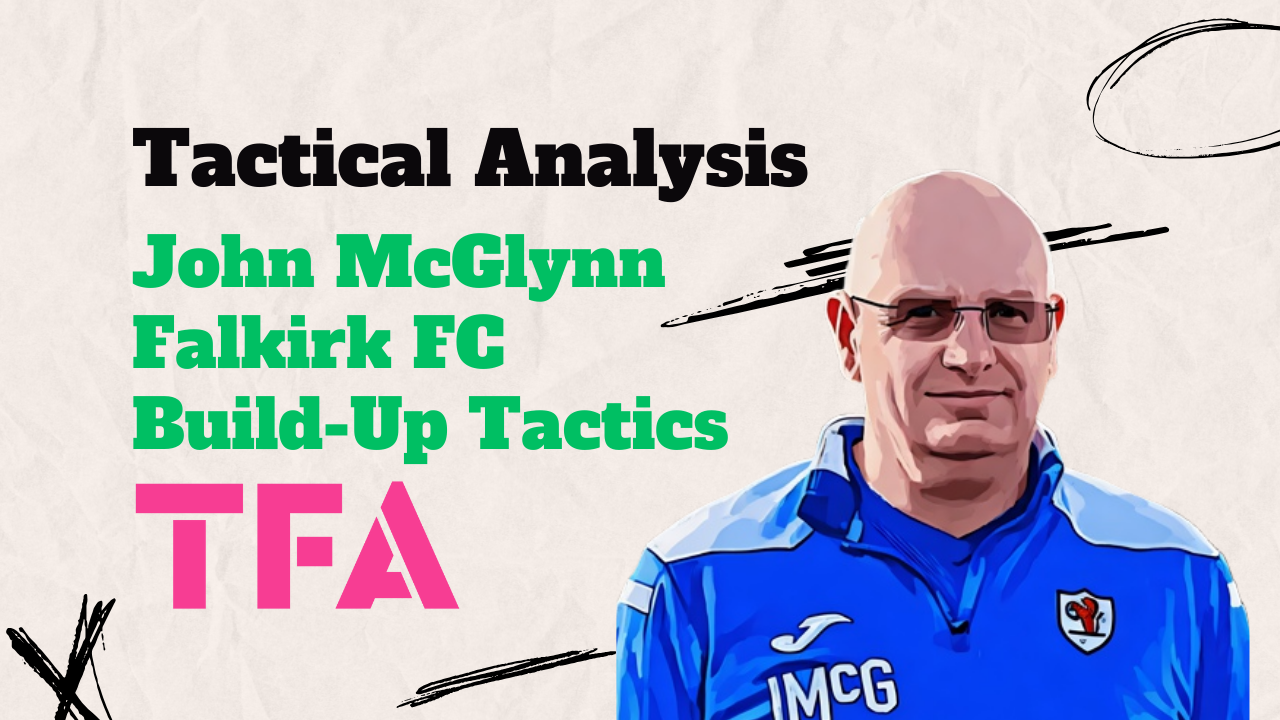




Comments